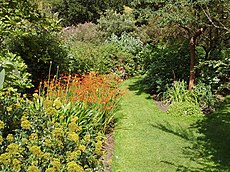List of plants used in herbalism

This is an alphabetical list of plants used in herbalism.
The ability to synthesize a wide variety of chemical compounds that are possibly used to perform important biological functions, and to defend against attack from predators such as insects, fungi and herbivorous mammals is called herbal medicine. Many of these phytochemicals have beneficial effects on long-term health when consumed by humans, and can be used to effectively treat human diseases. At least 12,000 such compounds have been isolated so far; a number estimated to be less than 10% of the total.
These phytochemicals are divided into:
For example, some secondary metabolites are toxins used to deter predation and others are pheromones used to attract insects for pollination. It is these secondary metabolites and pigments that can have therapeutic actions in humans and which can be refined to produce drugs—examples are inulin from the roots of dahlias, quinine from the cinchona, morphine and codeine from the poppy, and digoxin from the foxglove.
Chemical compounds in plants mediate their effects on the human body through processes identical to those already well understood for the chemical compounds in conventional drugs; thus herbal medicines do not differ greatly from conventional drugs in terms of how they work. This enables herbal medicines to be as effective as conventional medicines, but also gives them the same potential to cause harmful side effects.
In Europe, apothecaries stocked herbal ingredients for their medicines. In the Latin names for plants created by Linnaeus, the word officinalis indicates that a plant was used in this way. For example, the marsh mallow has the classification Althaea officinalis, as it was traditionally used as an emollient to soothe ulcers. Ayurvedic medicine, herbal medicine and traditional Chinese medicine are other examples of medical practices that incorporate medical uses of plants. Pharmacognosy is the branch of modern medicine about medicines from plant sources. Plants included here are those that have been or are being used medicinally, in at least one such medicinal tradition.
Modern medicine now tends to use the active ingredients of plants rather than the whole plants. The phytochemicals may be synthesized, compounded or otherwise transformed to make pharmaceuticals. Examples of such derivatives include digoxin, from digitalis; capsaicine, from chili; and aspirin, which is chemically related to the salicylic acid found in white willow. The opium poppy continues to be a major industrial source of opiates, including morphine. Few traditional remedies, however, have translated into modern drugs, although there is continuing research into the efficacy and possible adaptation of traditional herbal treatments.
Comments
Post a Comment